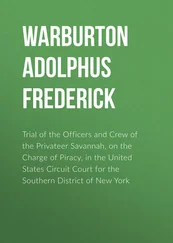The steward of the senate named Gering; old Mrs. Kanzler; the tailor’s fat wife; the woman cook of Mr. Mengerdorf; a stranger; a strange woman; Baunach, a senator, the fattest citizen in Würtzburg; the old smith of the court; an old woman; a little girl, nine or ten years old; a younger girl, her little sister; the mother of the two little aforementioned girls; Liebler’s daughter; Goebel’s child, the most beautiful girl in Würtzburg; a student who knew many languages; two boys from the Minster, each twelve years old; Stepper’s little daughter; the woman who kept the bridge gate; an old woman; the little son of the town council bailiff; the wife of Knertz, the butcher; the infant daughter of Dr. Schultz; a little girl; Schwartz, canon at Hach….
On and on it goes. Some were given special humane attention: “The little daughter of Valkenberger was privately executed and burnt.” There were 28 public immolations, each with 4 to 6 victims on average, in that small city in a single year. This was a microcosm of what was happening all across Europe. No one knows how many were killed altogether—perhaps hundreds of thousands, perhaps millions. Those responsible for prosecuting, torturing, judging, burning, and justifying were selfless. Just ask them.
They could not be mistaken. The confessions of witchcraft could not be based on hallucinations, say, or desperate attempts to satisfy the inquisitors and stop the torture. In such a case, explained the witch judge Pierre de Lancre (in his 1612 book, Description of the Inconstancy of Evil Angels), the Catholic Church would be committing a great crime by burning witches. Those who raise such possibilities are thus attacking the Church and ipso facto committing a mortal sin. Critics of witch-burning were punished and, in some cases, themselves burnt. The inquisitors and torturers were doing God’s work. They were saving souls. They were foiling demons.
Witchcraft of course was not the only offense that merited torture and burning at the stake. Heresy was a still more serious crime, and both Catholics and Protestants punished it ruthlessly. In the sixteenth century the scholar William Tyndale had the temerity to contemplate translating the New Testament into English. But if people could actually read the Bible in their own language instead of arcane Latin, they could form their own, independent religious views. They might conceive of their own private unintermediated line to God. This was a challenge to the job security of Roman Catholic priests. When Tyndale tried to publish his translation, he was hounded and pursued all over Europe. Eventually he was captured, garroted, and then, for good measure, burned at the stake. His copies of the New Testament (which a century later became the basis of the exquisite King James translation) were then hunted down house-to-house by armed posses—Christians piously defending Christianity by preventing other Christians from knowing the words of Christ. Such a cast of mind, such a climate of absolute confidence that knowledge should be rewarded by torture and death were unlikely to help those accused of witchcraft.
Burning witches is a feature of Western civilization that has, with occasional political exceptions, declined since the sixteenth century. In the last judicial execution of witches in England a woman and her nine-year-old daughter were hanged. Their crime was raising a rainstorm by taking their stockings off. In our time, witches and djinns are found as regular fare in children’s entertainment, exorcism of demons is still practiced by the Roman Catholic and other churches, and the proponents of one cult still denounce as sorcery the cultic practices of another. We still use the word “pandemonium” (literally, all demons). A crazed and violent person is still said to be demonic. (Not until the eighteenth century was mental illness no longer generally ascribed to supernatural causes; even insomnia had been considered a punishment inflicted by demons.) More than half of Americans tell pollsters they “believe” in the Devil’s existence, and 10 percent have communicated with him, as Martin Luther reported he did regularly. In a 1992 “spiritual warfare manual” called Prepare for War, Rebecca Brown informs us that abortion and sex outside of marriage “will almost always result in demonic infestation”; that meditation, yoga and martial arts are designed so unsuspecting Christians will be seduced into worshiping demons; and that “rock music didn’t ‘just happen,’ it was a carefully masterminded plan by none other than Satan himself.” Sometimes “your loved ones are demonically bound and blinded.” Demonology is today still part and parcel of many earnest faiths.
And what is it that demons do? In the Malleus, Kramer and Sprenger reveal that “devils… busy themselves by interfering with the process of normal copulation and conception, by obtaining human semen, and themselves transferring it.” Demonic artificial insemination in the Middle Ages goes back at least to St. Thomas Aquinas, who tells us in On the Trinity that “demons can transfer the semen which they have collected and inject it into the bodies of others.” His contemporary, St. Bonaventura, spells it out in a little more detail: Succubi “yield to males and receive their semen; by cunning skill, the demons preserve its potency, and afterwards, with the permission of God, they become incubi and pour it out into female repositories.” The products of these demon-mediated unions are also, when they grow up, visited by demons. A multi-generational transspecies sexual bond is forged. And these creatures, we recall, are well known to fly; indeed they inhabit the upper air.
There is no spaceship in these stories. But most of the central elements of the alien abduction account are present, including sexually obsessive non-humans who live in the sky, walk through walls, communicate telepathically, and perform breeding experiments on the human species. Unless we believe that demons really exist, how can we understand so strange a belief system, embraced by the whole Western world (including those considered the wisest among us), reinforced by personal experience in every generation, and taught by Church and State? Is there any real alternative besides a shared delusion based on common brain wiring and chemistry?
CARL SAGAN
The God Hypothesis
The Gifford Lectures are supposed to be on the topic of natural theology. Natural theology has long been understood to mean theological knowledge that can be established by reason and experience and experiment alone. Not by revelation, not by mystical experience, but by reason. And this is, in the long, historical sweep of the human species, a reasonably novel view. For example, we might look at the following sentence written by Leonardo da Vinci. In his notebooks he says, “Whoever in discussion adduces authority uses not intellect but rather memory.”
This was an extremely heterodox remark for the early sixteenth century, when most knowledge was derived from authority. Leonardo himself had many clashes of this sort. During a trip to an Apennine mountaintop, he had discovered the fossilized remains of shellfish that ordinarily lived on the ocean floor. How did this come about? The conventional theological wisdom was that the Great Flood of Noah had inundated the mountaintops and carried the clams and oysters with it. Leonardo, remembering that the Bible says that the flood lasted only forty days, attempted to calculate whether this would be sufficient time to carry the shellfish with them, even if the mountaintops were inundated. During what state in the life cycle of the shellfish had they been deposited?—and so on. He came to the conclusion this didn’t work, and proposed a quite daring alternative; namely, that over immense vistas of geological time the mountaintops had pushed up through the oceans. And that posed all sorts of theological difficulties. But it is the correct answer, as I think it’s fair to say it has been definitively established in our time.
Читать дальше












